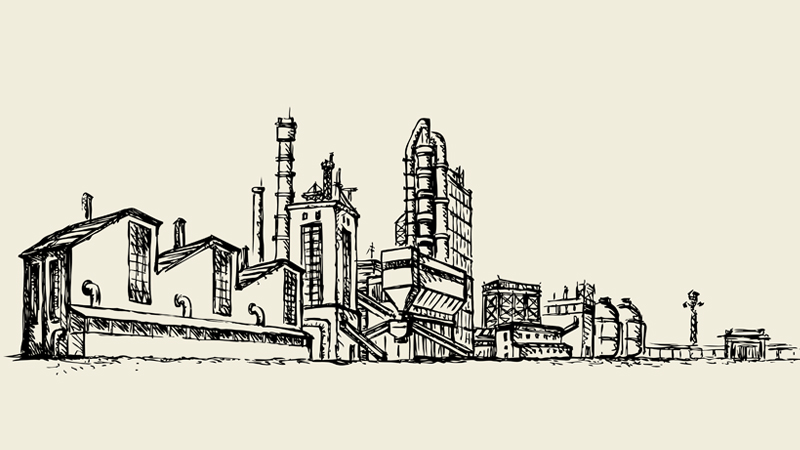
U.S. Factory Output Declines for Seventh Straight Month


The U.S. factory output demonstrated a continuing decline in May, marking the seventh consecutive month of contraction with a Manufacturing PMI of 46.9 percent, slightly down from April's 47.1 percent. This ongoing contraction, which began in June 2022, is mirrored by a fall in the Manufacturing PMI's 12-month average to 49.4 percent.
Of the five influential subindexes in the Manufacturing PMI, Production and Employment showed growth, but it was outweighed by larger declines in the other three subindexes – New Orders, Supplier Deliveries, and Inventories. Among the top six manufacturing industries, only Transportation Equipment saw growth in May. The New Orders Index marked its ninth month in contraction. Timothy R. Fiore, Chair of the Institute for Supply Managemen (ISM) Manufacturing Business Survey Committee, stated, "Three out of the ten subindexes remained above 50 percent during this period." A score above 50 percent indicates growth, whereas a score below 50 percent signals contraction in the manufacturing sector.
In the context of the wider economy, a Manufacturing PMI over 48.7 percent over a certain time, indicates economic expansion. Hence, the May Manufacturing PMI suggests a sixth consecutive month of overall economic contraction after 30 months of continuous growth. Fiore interpreted that, "The May reading of 46.9 percent indicates a reduction of 0.6 percent in the real GDP on an annualized basis, based on past correlations between the Manufacturing PMI and the overall economy."
New orders
In May, ISM’s New Orders Index marked its ninth month in contraction, recorded at 42.6 percent, which is a decrease of 3.1 percentage points from April's 45.7 percent. Fiore stated, "None of the six major manufacturing sectors reported an increase in new orders. Uncertainty regarding future customer demand has led to an accelerated contraction in new orders." A New Orders Index score above 52.7 percent over time typically aligns with an increase in the Census Bureau’s series on manufacturing orders.
Production
The Production Index saw a rise to 51.1 percent in May, up by 2.2 percentage points from April's 48.9 percent, signaling a return to expansion after five continuous months of contraction. Fiore commented, "Three of the top six industries experienced expansion in May. The index shows the best production performance since October 2022."
Employment
ISM’s Employment Index recorded 51.4 percent in May, marking an increase of 1.2 percentage points from the April reading of 50.2 percent. Fiore noted, "After two months of contraction, employment expanded again. Out of the six major manufacturing sectors, two showed expansion."
Supplier deliveries
In May, the delivery performance of suppliers to manufacturing organizations quickened for the eighth month in a row, with the Supplier Deliveries Index noted at 43.5 percent. This index level denotes the fastest supplier delivery performance since March 2009.
Of the top six manufacturing industries, only Transportation Equipment reported slower deliveries. “Panelists’ comments continue to indicate that suppliers have excess capacity to meet all of their customers’ current demand forecasts,” says Fiore. A reading below 50 percent indicates faster deliveries, while a reading above 50 percent indicates slower deliveries.
Two of 18 manufacturing industries reported slower supplier deliveries in May: Textile Mills; and Transportation Equipment. The 13 industries reporting faster supplier deliveries in May as compared to April — in the following order — are: Paper Products; Primary Metals; Plastics & Rubber Products; Wood Products; Nonmetallic Mineral Products; Computer & Electronic Products; Petroleum & Coal Products; Electrical Equipment, Appliances & Components; Chemical Products; Miscellaneous Manufacturing; Food, Beverage & Tobacco Products; Fabricated Metal Products; and Machinery.
|
Supplier Deliveries |
% Slower |
% Same |
% Faster |
Net |
Index |
|---|---|---|---|---|---|
|
May 2023 |
7.2 |
72.6 |
20.2 |
-13.0 |
43.5 |
|
Apr 2023 |
7.6 |
74.0 |
18.4 |
-10.8 |
44.6 |
|
Mar 2023 |
8.2 |
73.2 |
18.6 |
-10.4 |
44.8 |
|
Feb 2023 |
9.7 |
71.0 |
19.3 |
-9.6 |
45.2 |
Inventories
The Inventories Index was recorded at 45.8 percent in May, a slight decrease from April's 46.3 percent, indicating an accelerated rate of contraction in manufacturing inventories.
In May, none of the six major industries reported an increase in manufacturing inventories. This is due to companies continuing to reduce inventories in anticipation of decreased production. The Inventories Index hit its lowest point since August 2020, at 44.9 percent, a time that marked the beginning of recovery from the pandemic, according to Fiore. An Inventories Index that consistently stays above 44.4 percent typically signals growth, as seen in the Bureau of Economic Analysis's data on overall manufacturing inventories when adjusted for inflation to Year 2000 dollars.
Out of 18 manufacturing sectors, only two reported an increase in inventories in May: Textile Mills and Electrical Equipment, Appliances & Components. On the other hand, 11 sectors reported a decrease in inventories, in the following sequence: Apparel, Leather & Allied Products; Wood Products; Printing & Related Support Activities; Chemical Products; Furniture & Related Products; Fabricated Metal Products; Primary Metals; Transportation Equipment; Food, Beverage & Tobacco Products; Machinery; and Computer & Electronic Products.
Prices
ISM’s Prices Index was 44.2 percent in May, falling by 9 percentage points from the April reading of 53.2 percent, which implies a decrease in raw materials prices.
Backlog of orders
ISM’s Backlog of Orders Index was noted at 37.5 percent in May, marking a significant decrease from April's 43.1 percent, suggesting faster contraction in order backlogs.
Buying policy
In May, the average lead time for Capital Expenditures increased by two days to 172 days compared to April, while the average lead time for Production Materials decreased by six days to 84 days. The average lead time for Maintenance, Repair and Operating (MRO) Supplies was noted at 45 days, marking a reduction of one day from the previous month.
Related Insights:
View All
Get more stories like this
Subscirbe for more news,updates and insights from Beroe






